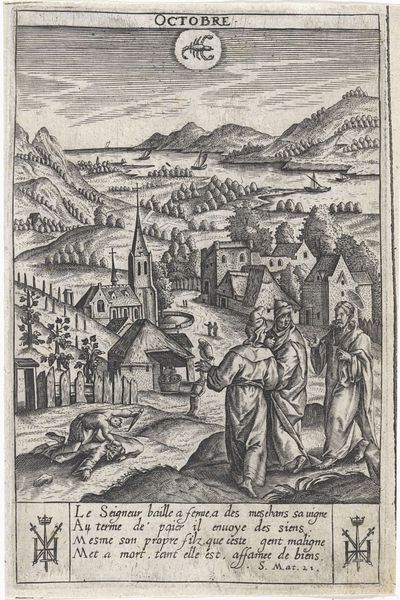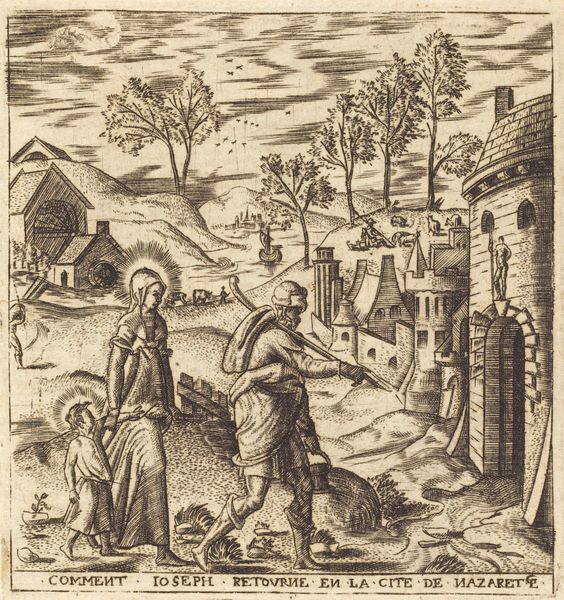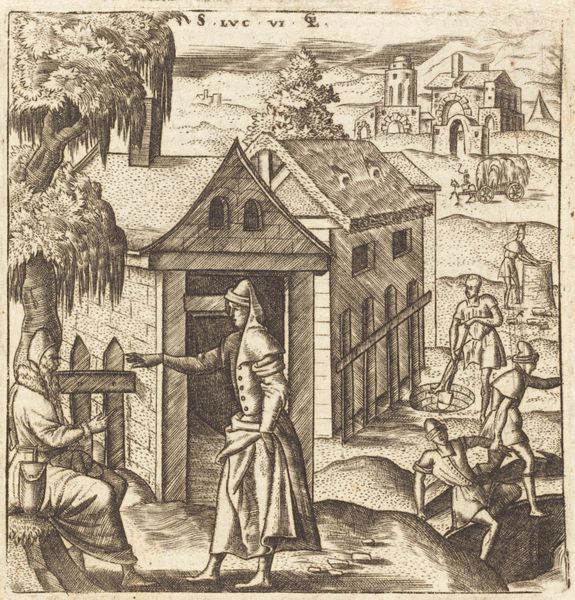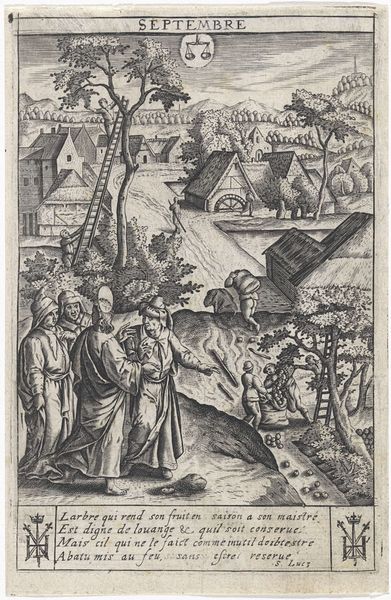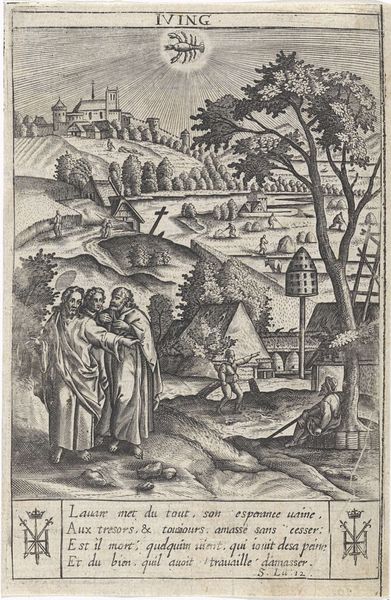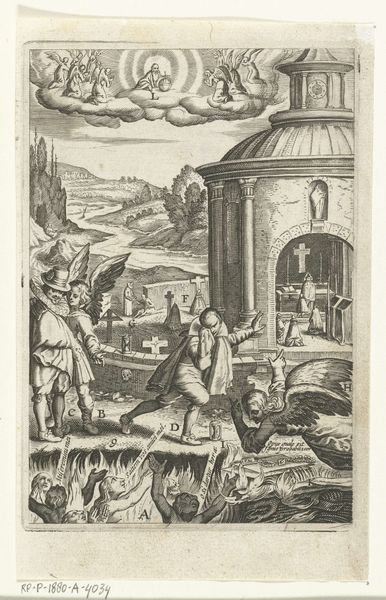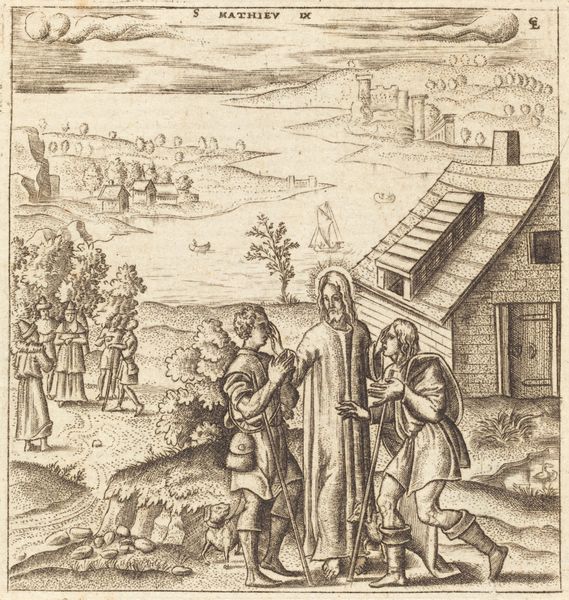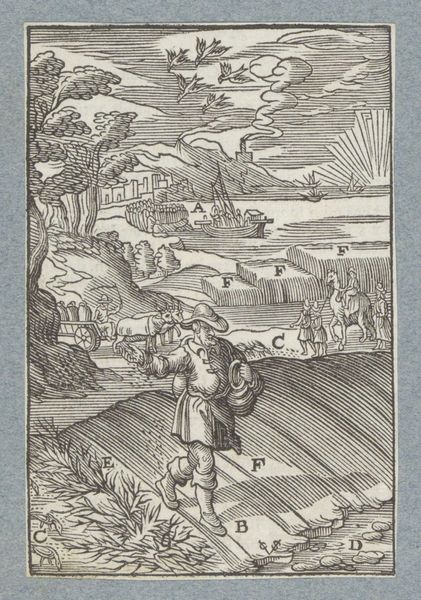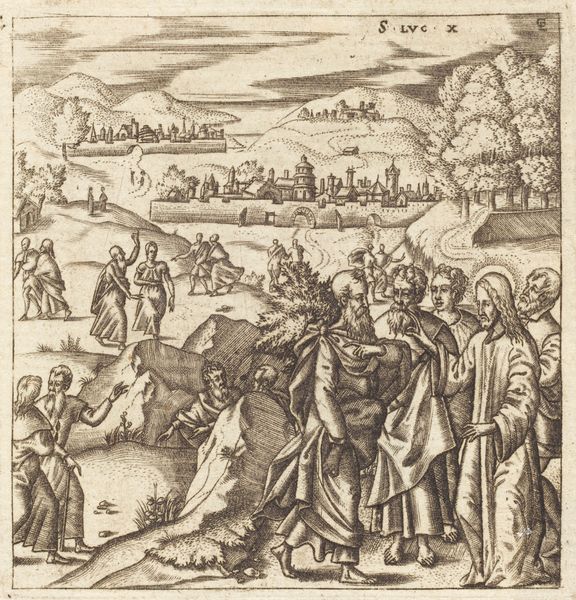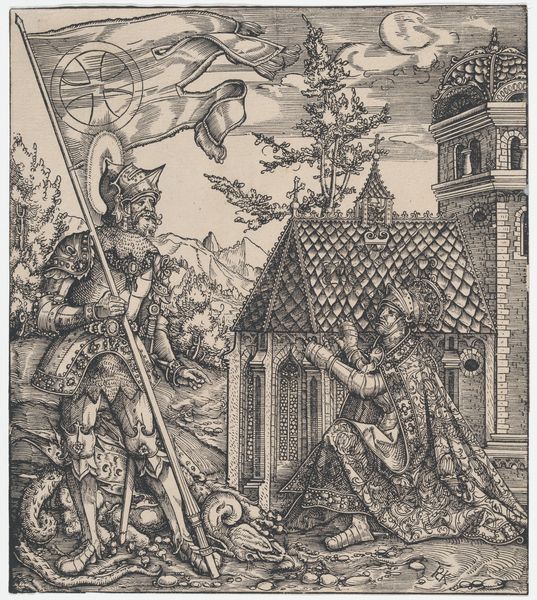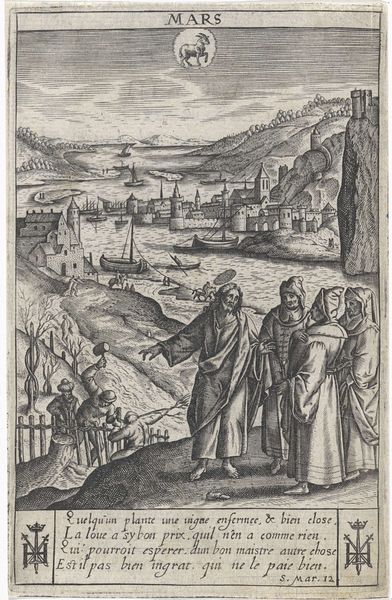
drawing, print, ink, engraving
#
drawing
#
narrative-art
#
pen drawing
# print
#
old engraving style
#
landscape
#
ink
#
cityscape
#
northern-renaissance
#
engraving
Dimensions: height 142 mm, width 92 mm
Copyright: Rijks Museum: Open Domain
Curator: Here we have Jan Gerritsz Swelinck’s "November," an engraving likely created between 1624 and 1645. The piece is rich with detail. What catches your eye? Editor: The textures, definitely. The cross-hatching in the sky and the layering of detail on the buildings—it really emphasizes the material reality of a late autumn day in a Northern European town. It’s surprisingly evocative for something rendered with such simple tools. Curator: It’s one in a series depicting the months. Note the figure of Sagittarius in the upper portion, directly labeling it as November. Such calendars often served a didactic social purpose, depicting the seasonal activities expected of each societal class. Editor: I’m intrigued by how the artist used line work to describe different materials. Look at the folds in the clothing versus the rough stone of the buildings. I wonder what kind of burin was used. And look, you can almost feel the chill through the figures interacting. You see that one walking down with a cap? Is it wool? Curator: Precisely, these prints reflected the cyclical nature of life and the importance of upholding traditions and social hierarchies. Editor: Absolutely, the engraving suggests that the artist also had in mind not only labor practices, but also class consciousness and consumerism Curator: The architectural details provide fascinating insight into the civic aspirations of the Dutch Republic during its Golden Age, too. Editor: It certainly makes you consider the division of labor within the art world back then, and even now. How printmakers like Swelinck made art accessible, transforming images from paintings and drawings into something that could be disseminated widely. Curator: So well-said; it's easy to see the enduring impact such prints had in shaping societal norms, disseminating humanist values, and visualizing civic identities of the period. Editor: This really illuminates how an image like this exists both as a piece of art and as a social document tied to material conditions. Thank you!
Comments
No comments
Be the first to comment and join the conversation on the ultimate creative platform.


